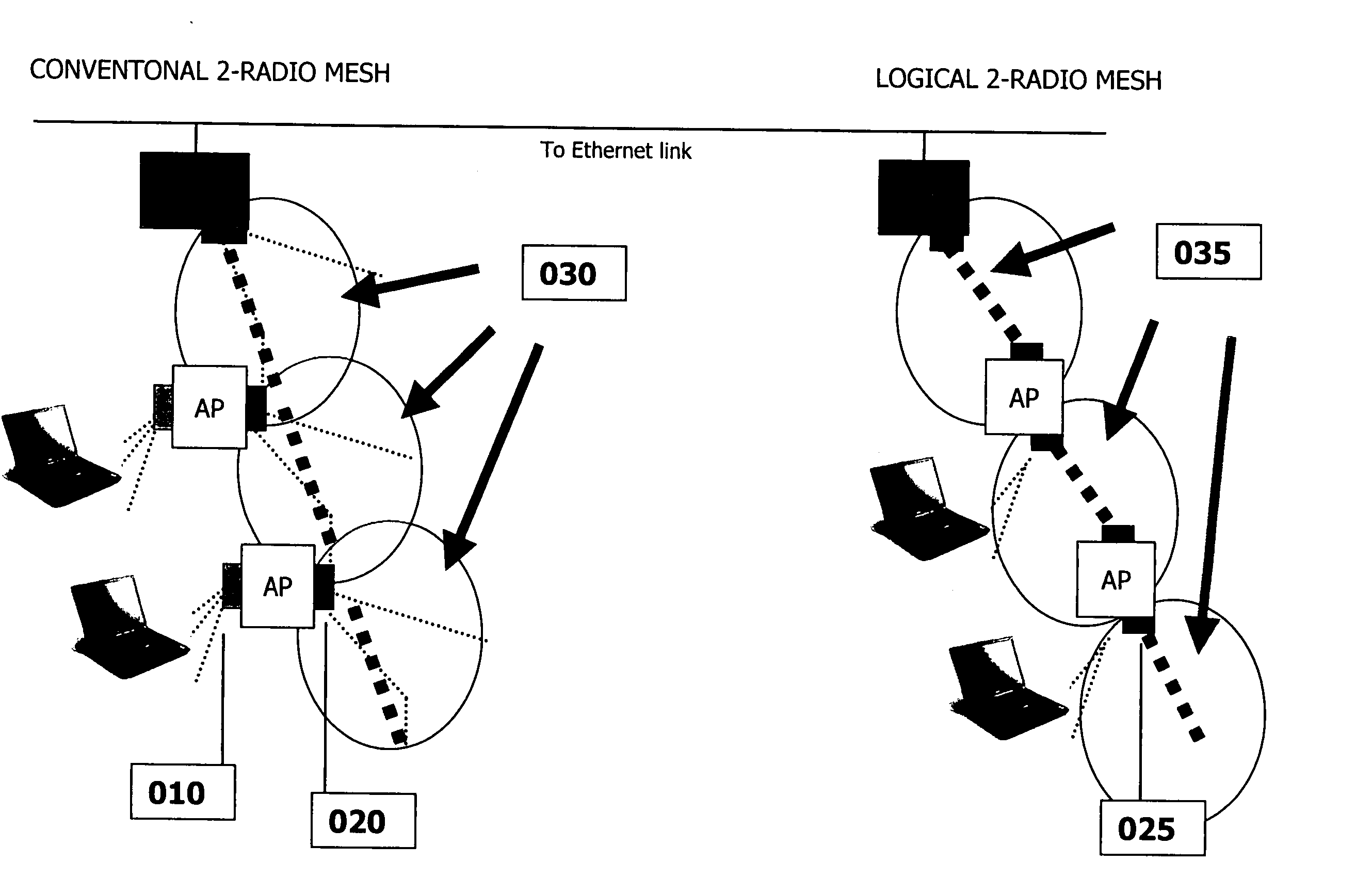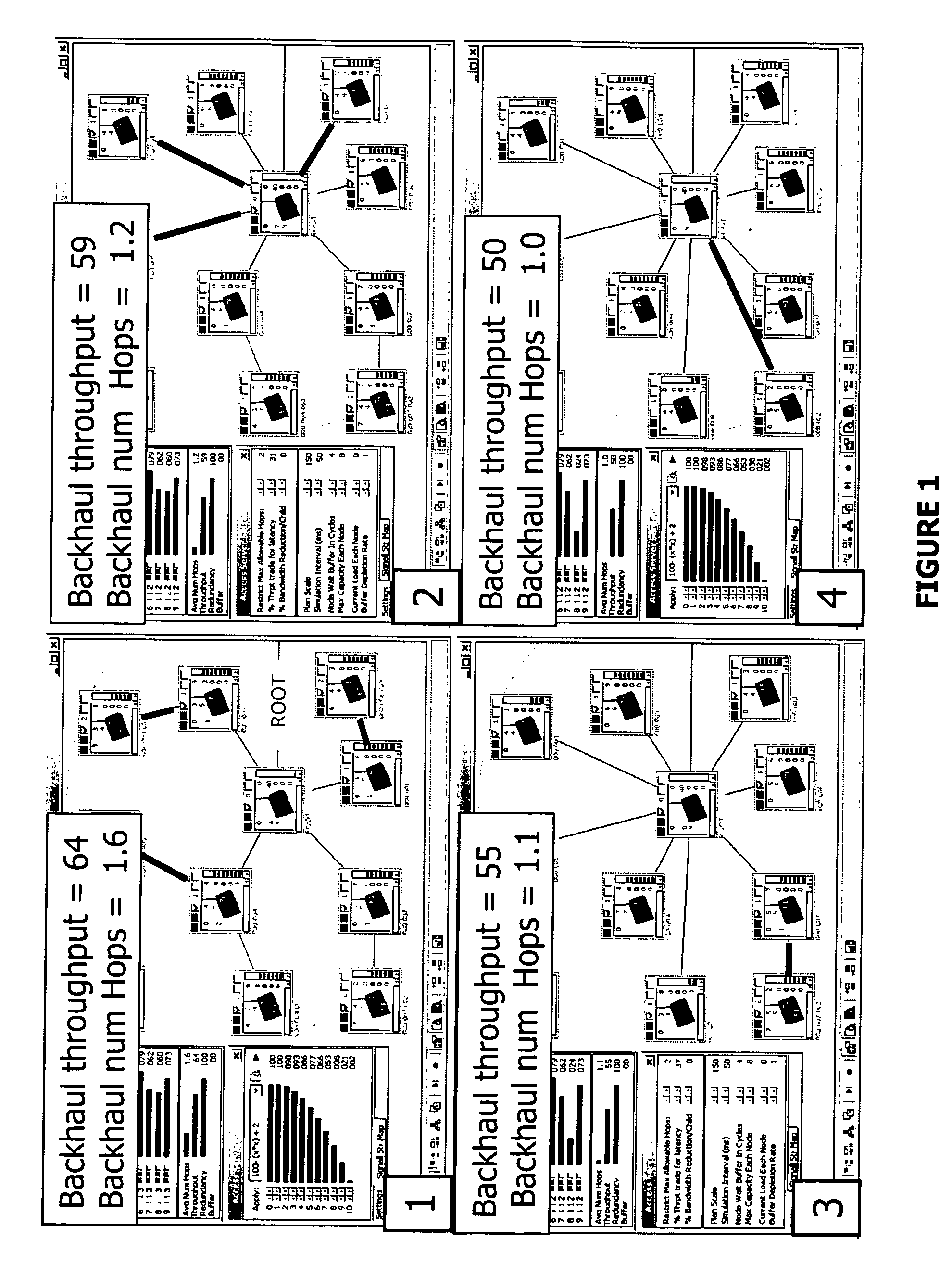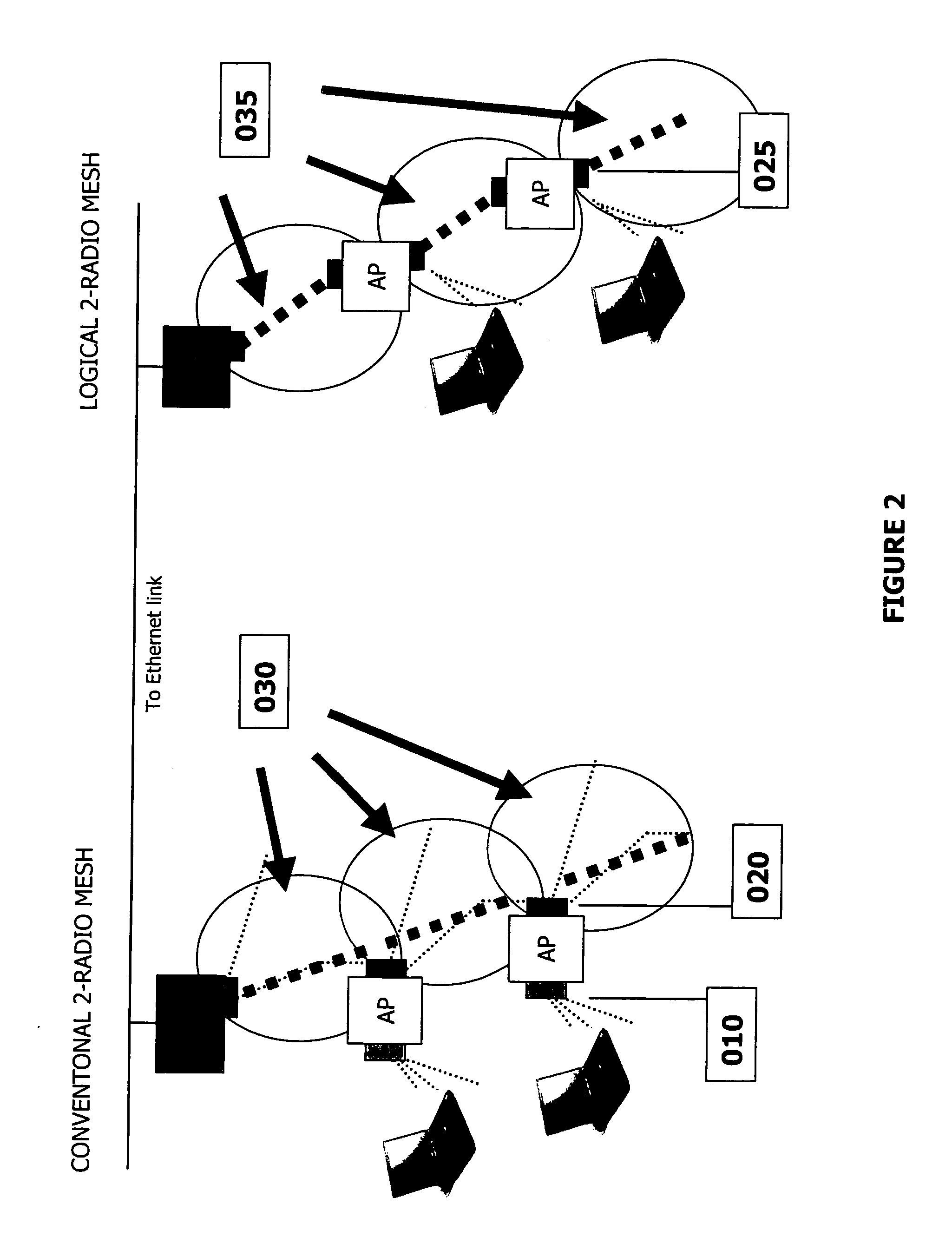Multiple-radio mission critical wireless mesh networks
a wireless mesh network and multi-radio technology, applied in the field of multi-radio mission critical wireless mesh network, can solve the problems of rapid performance degradation and unmanageable ap's bss, and achieve the effect of improving performan
- Summary
- Abstract
- Description
- Claims
- Application Information
AI Technical Summary
Benefits of technology
Problems solved by technology
Method used
Image
Examples
Embodiment Construction
[0065] The description above and below and the drawings of the present document focus on one or more currently preferred embodiments of the present invention and also describe some exemplary optional features and / or alternative embodiments. The description and drawings are for the purpose of illustration and not limitation. Those of ordinary skill in the art would recognize variations, modifications, and alternatives. Such variations, modifications, and alternatives are also within the scope of the present invention. Section titles are terse and are for convenience only.
[0066] Radio is a shared medium where only one person can be “talking” at a time. As networks grow, performance degrades rapidly as more clients are services by the same AP. The AP's Basic Service Set (BSS) becomes unmanageable. The need to split up the network into smaller groups is essential to the health of a network.
[0067] The problem is exacerbated in multi-hop topologies using one-radio systems. With one-radi...
PUM
 Login to View More
Login to View More Abstract
Description
Claims
Application Information
 Login to View More
Login to View More - R&D
- Intellectual Property
- Life Sciences
- Materials
- Tech Scout
- Unparalleled Data Quality
- Higher Quality Content
- 60% Fewer Hallucinations
Browse by: Latest US Patents, China's latest patents, Technical Efficacy Thesaurus, Application Domain, Technology Topic, Popular Technical Reports.
© 2025 PatSnap. All rights reserved.Legal|Privacy policy|Modern Slavery Act Transparency Statement|Sitemap|About US| Contact US: help@patsnap.com



